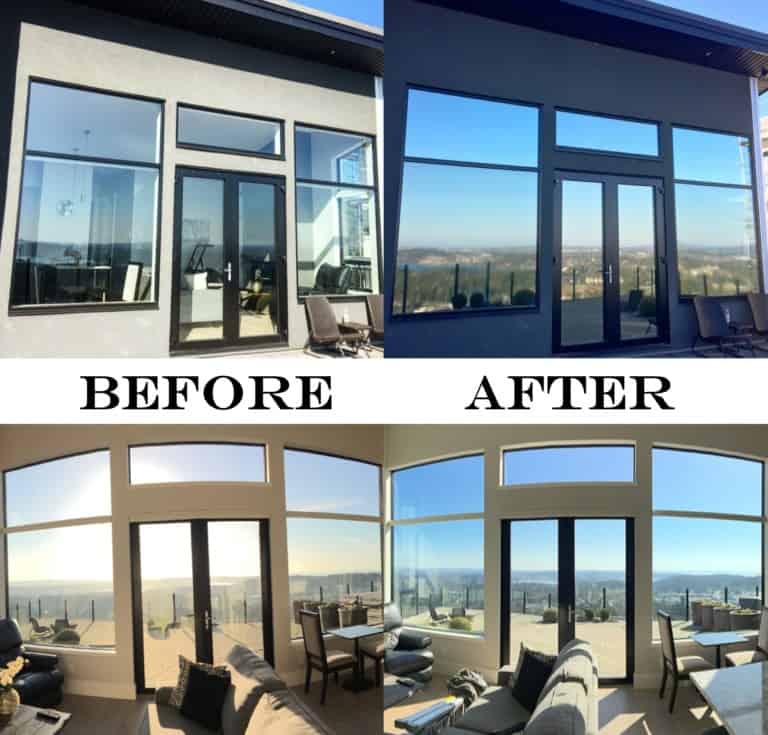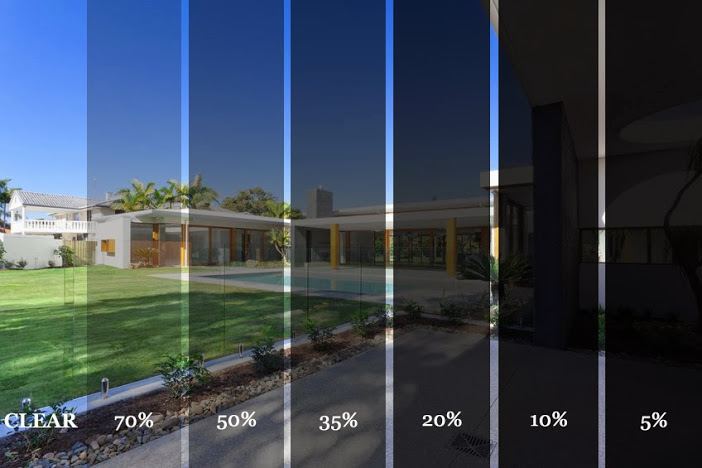Residential Window Tint for Large Windows: Preserve Convenience and Style
Residential Window Tint for Large Windows: Preserve Convenience and Style
Blog Article
Just How Residential Window Tinting Boosts Your Home's Energy Performance
Residential home window tinting offers an engaging solution for home owners seeking to enhance energy performance within their home. By applying specialized films to home windows, it properly lowers warm transfer, thereby supporting interior temperatures and reducing the need for too much heating or cooling. This not just reduces power usage yet likewise provides a much more comfy environment by alleviating glow. Nonetheless, understanding the subtleties of how tinting jobs and selecting the appropriate kind for your home can be critical. Oddly, what factors should one consider before making this investment?
Comprehending Window Tinting
Comprehending home window tinting is essential for property owners seeking to improve both comfort and energy efficiency in their living spaces. Residential Window Tint. Window tinting involves the application of a thin movie to the inside or outside surface area of glass home windows. This movie can substantially modulate the quantity of sunshine and heat that enters a home, thus affecting interior environment conditions
There are numerous kinds of home window tinting movies offered, each with unique residential properties. As an example, colored films absorb solar power, while reflective movies disperse it far from the glass surface. Ceramic films provide an equilibrium of presence and warmth rejection, making them a prominent selection amongst homeowners. The efficiency of window tinting is usually measured by its Visible Light Transmission (VLT) percentage, which shows exactly how much light can travel through the film.
Benefits of Power Performance
Window tinting not only enhances visual appeals yet additionally plays a considerable role in enhancing power performance within residential rooms. By reducing warm transfer via home windows, colored films develop a more steady indoor environment, which can cause considerable reductions in energy consumption for heating & cooling. This power performance translates into lower utility bills, giving homeowners with substantial lasting savings.

Furthermore, home window tinting boosts the comfort of living rooms. By minimizing glare and blocking damaging UV rays, colored home windows create a more positive atmosphere, which can lead to enhanced health for owners. The defense against UV rays additionally aids preserve furniture and floor covering from fading, adding to the long life of family products.
Just How Tinting Functions
Tinting films run through a mix of sophisticated products and technologies created to regulate the amount of solar power going into a home. Mostly made up of polyester, these films typically integrate ceramic or metallic fragments that absorb and show heat. This double capability permits them to significantly reduce the penetration of ultraviolet (UV) visit this site right here rays and infrared radiation while allowing visible light to go through.
The efficiency of window tinting is gauged by its solar warm gain coefficient (SHGC), which indicates just how much solar power is sent with the window. Reduced SHGC worths are better as they denote better warmth rejection. Additionally, window tints can feature a range of tones, allowing property owners to personalize their visual preferences while boosting power performance.
Moreover, these movies work as an obstacle, protecting against warmth loss during chillier months by reflecting interior heat back right into the home. This thermal insulation effect enhances the cooling benefits acquired throughout warmer months, contributing to a well balanced indoor climate year-round. By taking care this page of solar energy properly, household home window tinting not only enhances comfort but additionally plays an essential function in lowering power intake and lowering utility expenses.
Selecting the Right Color

There are various types of home window movies offered, including dyed, metalized, and ceramic. Ceramic movies give excellent warmth control without compromising exposure and are very durable, making them a prominent choice.
Noticeable light transmission (VLT) is another critical variable, as it suggests the quantity of all-natural light that can pass with the colored glass. Home owners should select a tint with a VLT that complements their lights preferences while still giving appropriate glow decrease.
In addition, assessing the solar warm gain coefficient (SHGC) can aid determine just how well a color can obstruct warmth from his explanation sunshine. A lower SHGC suggests much better warmth control, eventually boosting power effectiveness.
Installation and Maintenance Tips
Appropriate installation and upkeep are vital parts in making best use of the advantages of domestic window tinting. Specialists likewise make use of specialized tools and techniques, which can improve the sturdiness and efficiency of the tint.
Following installment, maintenance is vital to extend the life of the window film. It is advised to wait at the very least 30 days prior to cleaning the tinted home windows to enable the adhesive to treat fully.
Resolving these concerns quickly can stop more damage and maintain power performance. By sticking to these installation and maintenance tips, homeowners can guarantee their home window tinting continues to provide substantial power cost savings and comfort for years to come.
Verdict
To conclude, property window tinting works as an efficient solution for boosting power efficiency within homes. By lowering warm transfer and blocking hazardous UV rays, home window films contribute to reduce energy intake and improved interior convenience. The selection of ideal tinting products, together with appropriate installation and maintenance, further takes full advantage of these benefits. Eventually, home window tinting stands for a sustainable financial investment that not only decreases utility expenses yet likewise advertises a comfortable living setting throughout the year.
Home window tinting involves the application of a thin film to the interior or outside surface area of glass windows. By decreasing warmth transfer via home windows, colored films produce a much more secure interior climate, which can lead to significant decreases in power consumption for home heating and cooling.The performance of home window tinting is determined by its solar warmth gain coefficient (SHGC), which indicates how much solar energy is transferred with the home window. By managing solar energy efficiently, property home window tinting not just boosts convenience but also plays a vital function in minimizing energy intake and decreasing energy costs.
By reducing heat transfer and blocking hazardous UV rays, window films contribute to reduce energy consumption and improved interior convenience.
Report this page